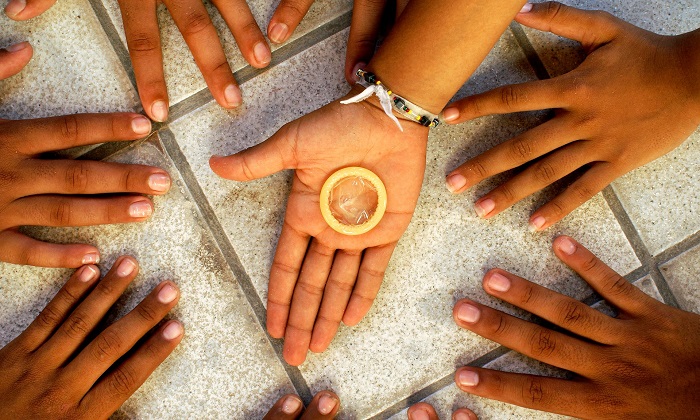HIV infecting 2m more people every year, warns UN

Nearly two million people have been newly infected with HIV every year for the last five years, says UNAIDS in its report ahead of the International Aids Conference in Durban next week. If that continues, it will be impossible to meet the UN goal of eradicating Aids by 2030.
Even though there are many well-understood ways to prevent infections – including education about the risks, supplying condoms and, most recently, drugs that can protect the partners of those who are infected - the numbers are going up, not down, in many regions.
Between 2010 and 2015, there was a 57% increase each year in people becoming newly infected in eastern Europe and central Asia. The numbers of new infections had been dropping for years in the Caribbean, but over the same period they rose annually by 9%. The annual rise in the Middle East and North Africa was 4% and in Latin America it was 2%. Although other regions did not see a rise in infections, there was no drop either.
The trend is a blow to those who had predicted that the epidemic would be over in the foreseeable future. In 2011, Hillary Clinton, then US secretary of state, anticipated the end of Aids, saying that US efforts had “helped set the stage for a historic opportunity, one that the world has today to change the course of this pandemic and usher in an Aids-free generation”.
In June, the UN general assembly issued a declaration committing to speed up efforts to end the epidemic by 2030. The roll-out of antiretroviral drugs to people with HIV has cut the death toll, but the figures from UNAIDS show that much more will need to be done on prevention.
Money is a major issue. The drug treatment programmes are costly and experts agree that keeping all those infected – now 36.7 million people worldwide – on drugs for life is not sustainable if the numbers continue to rise.
But Aids has a lower profile now that the deaths are falling and this has led to a drop in funding from international donors, from a peak of $9.7bn in 2013 to $8.1bn in 2015, although the affected countries have increased their spending on HIV, so that now they contribute 57% of the total – which was $19.2bn last year.
Most of the money goes on treatment – just 20% is spent on prevention, says UNAIDS. The report recommends that resources should be focused on high-risk groups.
In eastern and southern Africa, for example, three-quarters of all new HIV infections among 10 to 19-year-olds are of girls, says the report. They do not know enough about HIV and are prey to older men, unequal in their societies and subjected to violence.
Worldwide only three in 10 adolescent girls and young women between the ages of 15 and 24 years have comprehensive and correct knowledge about HIV, says the report. Reaching adolescent girls and young women, especially in sub-Saharan Africa, will be a key factor in ending the epidemic, it says.
Elsewhere, there are other issues. In eastern Europe and central Asia, 51% of new HIV infections occur among people who inject drugs. More than 80% of the region’s new HIV infections in 2015 were in Russia. There are few harm reduction programmes to help those at risk.
In western and central Europe and North America, around half of all new HIV infections occur among gay men. Between 2010 and 2014, new HIV diagnoses among men who have sex with men increased by 17% in western and central Europe, and by 8% in North America.
The International HIV/Aids Alliance, which represents community groups worldwide, said it was concerned about the trend.
Shaun Mellors, the alliance’s associate director for Africa, said: “It is significant that UNAIDS has publicly acknowledged the concerns that remain about HIV prevention. To respond to this global prevention gap, we need rapid investment and implementation of tailored combination prevention services for all populations at risk of HIV.
“Meeting these targets requires a rapid acceleration in treatment and prevention programmes, rooted in human rights and gender equality, and centred on people living with or affected by HIV.”















































